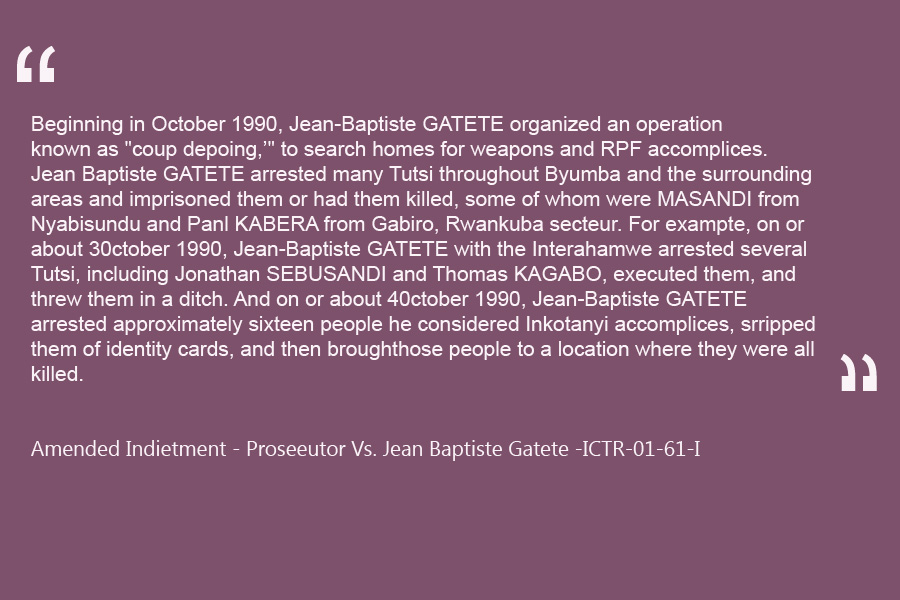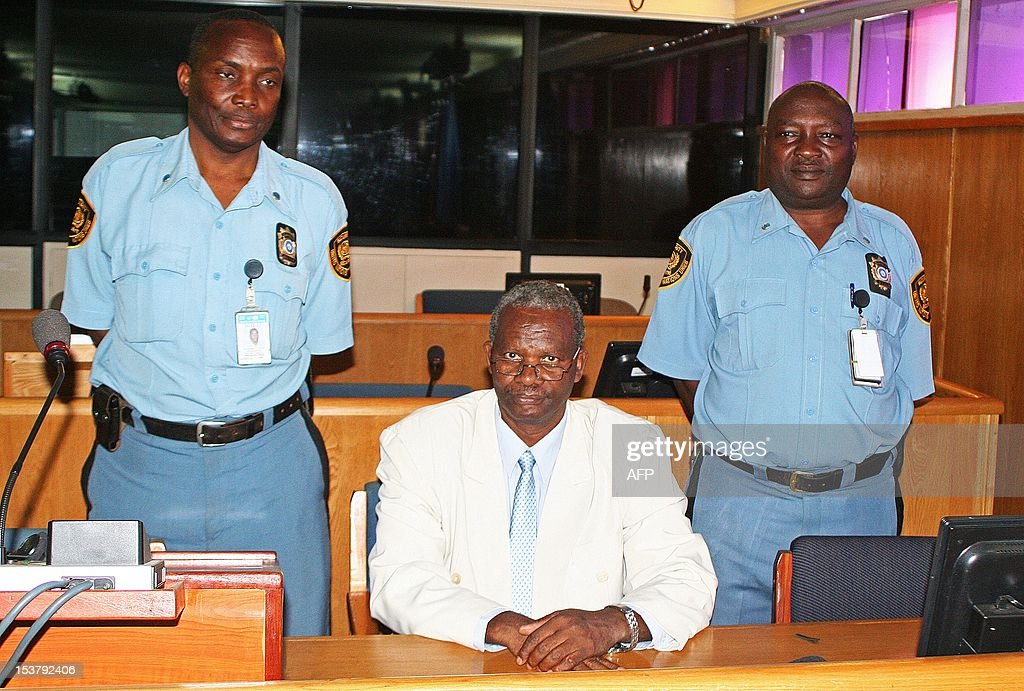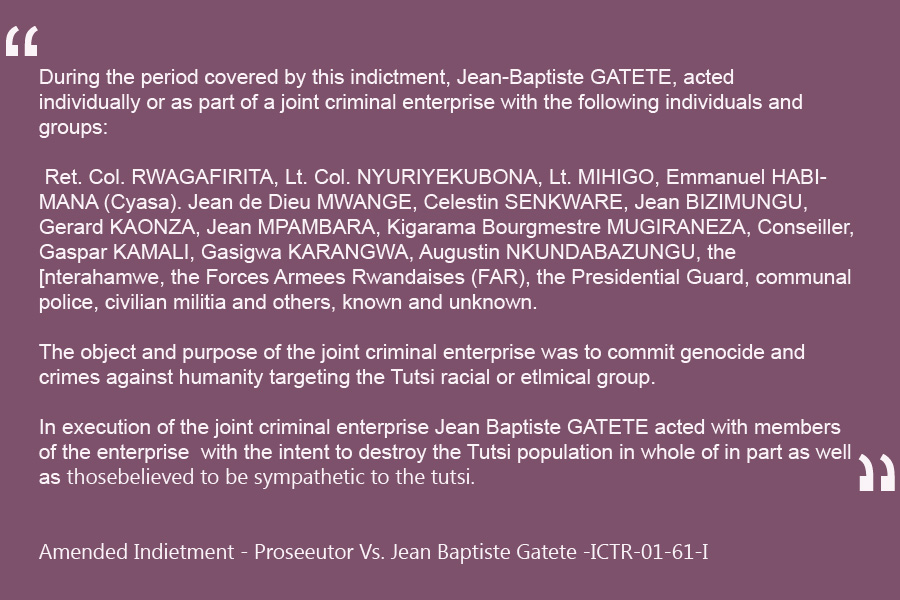
Jean Nepo Sibomana, Genocide survivor from Gatsibo shares his testimony at Kwibuka 28
As earlier as October 1, 1990, Jean Nepo Sibomana 33, a Genocide survivor from former Murambi commune, Rwankuba cell-current Gatsibo district was aware that some people were not wishing his family well.
He was barely 7 years old when the Rwanda Patriotic Army (RPA) Inkotanyi launched the liberation struggle to reclaim the right of thousands of refugees to be Rwandan.
That evening, Sibomana was at his neighbors’, and the father found it important to go pick him. On their way back, some people threatened to kill the father.
Hadn’t the neighbours come to plead for him, he wouldn’t have escaped.
“No wonder these people will kill us!” Sibomana heard from his father as they were heading home.
In fact, within the first week of the battle, Jean Baptiste Gatete, then Bourgmester of Murambi commune started arresting the Tutsi one after the other, accusing them of being part of RPF militia or accomplices.
In the end, he killed sixteen (16) of them, and, between 1991-1994, he made some Genocide trials. One day of 1991, he destroyed several properties and torched houses of the Tutsi who would flee to Kiziguro parish for three weeks.

These trials were coupled with training of Interahamwe and other activities which, apparently intended to single out the Tutsi.
At Sibomana’s class, a teacher who happened to be the young brother of Bourgmester Gatete would count them from Monday to Friday.
“I once asked my colleague: how often will this teacher count us, can’t he just record the number? After all, we are six only,” he once asked a classmate.
The later reported this to the teacher and Sibomana was severely beaten up to an extent he decided never to return to school.

Kiziguro Genocide memorial site
Parents forced him to go back to school because whenever a Tutsi dropped out of school, Gatete would allege that they had joined Inkotanyi and the family would pay heavily.
With all this, earlier than 1994, Bizimana’s family and neighbors resolved to make the bush a ‘second home’.
Though Gatete was driving the killing machine, he was no longer bourgmester of Murambi Commune during the Genocide.
According to the UN Tribunal (ICTR) indictment, Gatete was dismissed by Prime Minister Dismas Nsengiyaremye in 1993 on allegation that he persecuted the Tutsi of Murambi.
Upon his dismissal, he secured an even juicy post as Director at Ministry of Gender and Family promotion then led by Pauline Nyiramasuhuko.
The indictment further reads that Gatete still kept his influence in Murambi, as a leader of Interahamwe militia in the commune.
Thus, on April 7, 1994 Sibomana was preparing to go to the catholic parish to enroll for minor seminary exam when his father told him “leave it son! Just go look after cows.”
Had he barely finished the sentence, they heard shouting of Interamwete, the ‘She’ Interahamwe militia who were heading to Rwankuba sector for a meeting that was convened by Gatete and his successor Jean de Dieu MWANGE.
In fact, Gatete had converted several families of Hutu into his killing machine; he trained men under Interahamwe militia and women under Interamwete (the people who support).
He also trained imiyugiri(rebel bees) under the regiment of young children-teenagers.

Kiziguro and its huge hole
At 10AM, killings were launched in the villages of Rwimitereri and Nyabisindu.
“We were used to defend ourselves and Gatete would always warn interahamwe on that,” Sibomana said.
The adults resisted interahamwe from 10AM to 4PM when the militia vanished. The Tutsi started trying some hideouts where one old man took women and children into his thatched houses, but Sibomana’s instinct directed him to the bush.
“My mom and my siblings followed me and I climbed a tree with two of them while my mother remained in the hideouts around with two other children, including a baby,” he said.
Interahamwe regrouped in a blink of an eye and Gatete re-deployed them with heavily armed soldiers.
“They shoot us terribly. I could watch them from the tree top. Our parents who were resisting them with traditional weapons got exhausted and that night, the Tutsi scattered, fled to Kiziguro via a hostile wetland of Kanyonyomba.
At least 50 women and children were not able to flee with the rest; Interahamwe burnt them alive.
“We spent three days at Kiziguro church without our basic right to water and food. They wanted us to starve.”
Contrary to previous decades where the Tutsi would be safe if they managed to flee to church, the priests including one Jean Pierre and Santos abandoned them.
On April 11, soldiers checked the place to find any potential hideout of the Tutsi. After having them all in the church, they welcomed Interahamwe who started killing with crude weapons.
“I turned my head and was lucky to see my mother in this miserable crowd. She handed me Rwf 1400 and told me; keep it. In case you survive, take care of your siblings,” recalls Sibomana.
“It was my last day to see my mother. The killers started reading names of the Tutsi and to tick whenever the person on their list fell.”

Jean Baptiste Gatete(Middle) at ICTR
The killing started, and it turned to be a very bad day for thousands of Tutsi that were gathered in the church and the nearby Kiziguro hospital.
“One of the killers asked me if I had money; I took Rwf 400 and gave him. He spared me for that moment, but their chief dismissed him while saying: we did not bring you for that,” recalls Sibomana.
In Kiziguro, there was a very deep pit that was dug in early 1970s while drilling water and was left open.
When killings intensified, they started involving the Tutsi to carry bodies of their own relatives to the pit
“They would cut into pieces one’s parent and ask him/her to carry them on wheelbarrow up to the pit which they had turned into a mass grave,” Sibomana said.
Time came to walk all the remaining Tutsi to the pit to throw them alive when Sibomana sneaked through the miserable crowd and run for his safety. One Interahamwe shot him with an arrow, which injured him.
He bled severely until a well-wisher came, picked him from bodies and took him home to hide.
“That man was really kind. He hid me under the bed-urutara and warned me: please keep quite because if my wife gets to know that you are here, she will kill you,” Sibomana recalls.
The following morning, the government forces passed nearby with so many casualties and there was a call to everyone to vacate. Sibomana mixed with that movement but he would be discovered by Interahamwe who threatened to kill him.

A young lady whose name Kayitesi, covered him and said: “You cannot kill my son.”
Sibomana finally escaped to Muhura where he spent three months until RPA came for his rescue.
He was sent to an orphanage at Rutare commune and later on brought back to Muhura where he was able to reconnect with his aunt who took him to Kigali.
“I severely fell sick; I could see images of the massacre that I witnessed in my village, but doctors would just give me Malaria medicines. I resolved to return to the village,” Sibomana testifies.
He however was compelled to return to Kigali where he studied upper Primary school before winning national exam and be affected at Gitwe High school in Ruhango district.
“In Gitwe, I joined the association of student survivors of the Genocide against Tutsi which introduced me to healing process. I understood that there were people who suffered more than I did and started counseling them instead,” said Sibomana.
He later on went to university, then got married and afforded to return to his village where he built a technical school.
“The objective was to pay the evil of Gatete in Murambi with good work. Today, former Interamwete, Interahamwe and Genocide survivors work in that same school which pleases us,” he said.
In 2012, the appeal chamber of UN criminal tribunal for Rwanda based in Arusha, Tanzania sentenced Gatete to 40 years in jail over Genocide crimes committed in Murambi.
Meanwhile, Sibomana and fellow Genocide survivors of the area contributed to the construction of Kiziguro Genocide memorial which is the final resting place for more than 20,000 victims of the Genocide. They will be remembered tomorrow.

